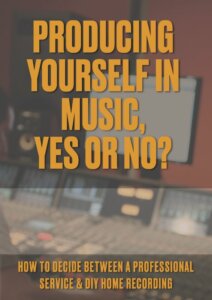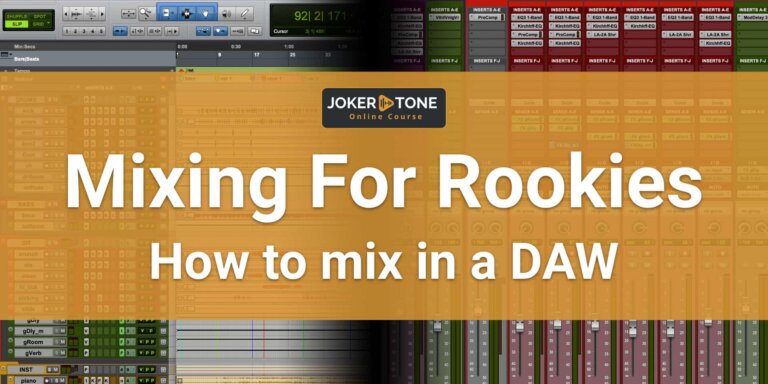What about Arc Studio vs. Sound ID
I am a supporter of room correction tools because I think that they can help all users enormously in the entire production process. Especially if this happens on the DSP-supported level and the latency is not noticeable during monitoring or recording.
Certainly, such tools cannot create a good production environment from an unsuitable and acoustically unprocessed room, but these programs can create a clear and more cost-effective difference. Where the user can’t get any more optimization or just add the last percent to a fantastic sound experience.
Even though I have already found a monitoring system for myself that basically meets all my requirements and wishes, I am always excited when new comparable systems come on the market.
With the release of Arc Studio (with a hardware DSP box and new Arc Version 4), IK Multimedia has brought out just such a product. I’ll say upfront that I haven’t tested the system and only want to make a comparison based on the information published here.
What is the Arc Studio from IK Multimedia?
IK Multimedia ARC (Advanced Room Correction) System is a software and hardware solution designed to improve sound quality in music and post-production studios. It uses acoustic measurements and digital signal processing to detect and resolve problems with room acoustics.
ARC Studio consists of a software application that runs on a computer and a measurement microphone that is used to take acoustic measurements in the room. The software guides you through the measurement process and then analyzes the measurements to identify issues such as frequency distortions, phase shifts and resonances that can be caused by reflections and resonances in the room.
Based on the measurement results, ARC Studio then generates digital correction filters that are applied to the audio signal in real-time to optimize playback to sound as if it were being played in an acoustically treated room.
Overall, ARC Studio allows you to better control the sound quality of your recordings and playbacks by minimizing the negative effects of room acoustics.
What is the SoundID Reference from Sonarworks?
The SoundID Reference software is a software solution developed to optimize sound reproduction in studios and audio environments. The software uses acoustic measurements and digital signal processing to detect and correct room acoustics and speaker characteristics.
With SoundID Reference, the user can use a measurement microphone to take acoustic measurements in the room. The software guides the user through the measurement process and then analyzes the measurements to identify problems such as frequency distortions, phase shifts and resonances.
After measuring the sound, SoundID Reference makes digital filters that can be used on the audio signal right away. Different reference curves and presets can be used to tailor the sound to your tastes or to match specific standards.
SoundID Reference improves the sound quality of recordings and playbacks by minimizing room acoustics and speaker characteristics.
Why it is a good step in the right direction
This is from the IK Multimedia website:
“Upgrade any studio monitors instantly with the first out-of-the-box acoustic room correction system that anyone can afford. ARC Studio combines a standalone correction processor, new ARC 4 measurement software and a room analysis microphone.”
They bring a full package with Hardware DSP Processor, the analysis microphone, and the Software, with an affordable price tag.
“There’s a reason all today’s top-tier studio monitors are adding active room correction – it supercharges their performance and ensures mixes translate flawlessly. ARC Studio offers this same massive boost in performance and accuracy to any monitor in every studio.”
I think they are right. More and more monitors can have the manufacturer correction system, like Neumann or Genelec, or they can use 3rd Party options like SoundID on Adam or Fluid Audio Monitors.
“For the first time in the recording industry, an affordable hardware processor can be used as a correction and calibration system for any type of studio — be it home, project or professional — without the limitations of a software-only system.”
Yes, they are also right on track. They beat all of them with the price tag, including their hardware-based option.
Link: https://www.ikmultimedia.com/products/arcstudio/
I appreciate the approach with the hardware-based DSP solution enormously, as it offers some clear advantages over purely software-based solutions. The new hardware box not only looks appealing but is also a true plug-and-play solution that is ready to use without much effort. This makes it extremely user-friendly and enables uncomplicated use for every user.
What particularly impresses me is that, despite its performance, the hardware box does not take up much space and can be easily accommodated in even the smallest of working environments. This compact design makes it extremely versatile.
And talking about the price — well, the price point including the software is really impressive. It’s great to see such a powerful solution available at an affordable price. All in all, this hardware-based DSP solution offers a winning combination of performance, ease of use and value.
Why I put them against
Competition is always good. This is a driving force in the economy that encourages innovation, efficiency, consumer choice, quality, economic growth, and accountability, ultimately benefiting both businesses and consumers. And in this kind of market, the options are most of the time expensive. So IK Multimedia set a new row with their product and price tag.
Options are always good because there was a time when I couldn’t invest nearly 2000 Euro into an interface to get that option like with my now used Merging Anubis Interface.
I would hope that other companies (like Universal Audio) come into the product and price range or build something inside their interface production.
Why I think DSP correction is the best way
There are reasons why DSP corrections are ahead over only software-based options.
- Listen while Recording and Mixing
- If the system provided this, the user will hear/feel no affecting delay
- Setup once and forget it while changing workflow inside the DAW
- Largely independent of updates to the music computer and its software
- No Monitoring channels in DAW or any kind of system-wide monitoring software
With a Hardware based-DSP correction, that takes place before your monitors, you can even change your monitoring speaker system without losing any of the advantages of the DSP correction.
If the hardware-based DSP correction with its software will be better than the speaker’s correction is another topic that I won’t discuss at this point.
Comparing Arc Studio vs. Sound ID
Let’s do the comparison of the Arc Studio vs. Sound ID when it is used as the DSP version on the Merging Anubis interface. Even while the price point is not fair to compare, the Merging Anubis is a complete Interface system with a bigger set of production solutions.
What comes with the package from IK Multimedia Arc Studio
- Hardware Setup Box with no Controller
- In and out for Speakers: 1x Stereo Signal IN / 1x Stereo Signal OUT
- Correction: 1 set of Stereo Speaker
- Microphone
- Calibration on the Computer side and upload to the system
- Customization of the Monitor Speakers Sound
- Monitor Speaker Emulation
- Latency at Natural Phase mode: 1.4 ms (https://www.ikmultimedia.com/products/arcstudio/index.php?p=specs)
- Audio conversion and internal processing sampling rate: 96 kHz
- Audio conversion resolution: 24-bit
- Internal processing resolution: 32-bit float
- Price Point: 300 Euro excl. VAT
What comes with the combination of SoundID and Merging Anubis:
- Hardware Interface with Controller
- In and out for Speakers: 2x Stereo Signal IN / 2x Stereo Signal OUT / 2 Headphones Out
- Correction for 2x set of Stereo Speaker (Sub optional) // 2x Headphones
- Microphone from SoundID
- Calibration on the Computer side and upload to the system
- Customization of the Monitor Speakers Sound
- Monitor Speaker Emulation
- Latency: AD/DA Anubis 0.9 ms + 1.4 ms SoundID (https://www.sonarworks.com/soundid-reference/integrations/merging-anubis)
- Price Point: Anubis 1999.- Euro excl. VAT
- You need additional the SoundID Reference 350.- Euro excl. VAT
Why I don’t look too deep on the technical side for this comparison:
- It won’t be fair to compare the AD/DA of the two boxes from their price point, and of course not with the usage of both devices in mind. We have a box that is only used to be the DSP for the monitoring correction on the IK Multimedia side and on the other side one of a higher-end multichannel desktop interface from Merging.
- Would it be helpful to you to compare these technical AD/DA numbers? For me, it was never a selling point. Even while I have an Apollo X-System and the Merging Interface I can’t hear the significant differences on the outside while mixing or inside while recording, that would change my mind to work only on system exclusive.
Why the Merging Anubis would still be my first choice
Let us keep the price and also the interface function of the Anubis out of the view for a moment.
- Controller: With the Merging Anubis, you have control functions for Volumen, Mute, Select, Input level control and all with hardware buttons and touch display control options.
- More speaker outputs: The glory of having 2 monitor outputs that could have individual room correction
- Headphone Correction: A big plus is the two headphone outputs that can have the SoundID Headphone Correction as well.
Doing some math
Let’s spin this a bit further for a comparison of the price point.
We take the price of the hardware solution from Arc Studio of around 300 euros and set this as the cost point for a calibrated DSP stereo output.
With the Merging Anubis, we get 4 calibrated DSP stereo outputs and would then estimate around 1200 euros.
This leaves around 800 euros for the additional functions such as a fully-fledged monitor controller, network interface, 2 microphone inputs, 2 line inputs and the option to expand the entire system with additional devices.
The price of the SoundID package is then added on top of this. If you compare this rough calculation with each other, the price for the Merging Anubis interface is relativized in my opinion and the user gets a lot for the additional costs.
Conclusion
If you do have not the budget to get into SoundID on DSP together with Merging Anubis or any other possible Interface or set of speakers, then try the IK Multimedia Arc Studio system. I think they missed the point of having a digital Input for the Arc Hardware box, but that is probably the reason for that lower price point. And that seems to me was one of the big goals, to create a Hardware solution in the lower range that can compete with any other products if you are on a tight budget. Maybe we will see an „Arc Studio Pro“ box with more DSP and as well more I/O.
While I do have not any real experience with the IK stuff, I believe you should check out what can be done inside your room with the Hardware DSP box. The latency of 1.4 ms is in my view excellent and you probably won’t notice any delay while mixing and recording with the correction engaged.
Will it turn your bedroom into a professional build studio? No!
Can it help to achieve better production results? Of Course! Then why not give it a try and keep it if it works for you?
Do you get the IK Multimedia Arc Studio? Please let me know how it is working for you. I am excited to hear your story.
If you have further questions or want to get in contact, please consider using the contact form
Niels from Joker Tone Course




